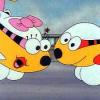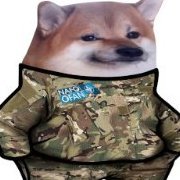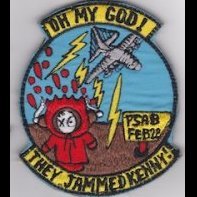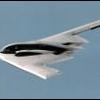-
Posts
224 -
Joined
-
Last visited
Profile Information
-
Gender
Male
-
Location
Camas, WA USA
-
Interests
1/48th WW2 to modern aircraft
Recent Profile Visitors
1,470 profile views
Mark V's Achievements

Established Member (3/9)
1k
Reputation
-
Looking forward to seeing your build. I have never seen an actual real-life Javelin, even in museums. I am on the lookout for this kit, watching for a discount, but they are hard to find.
- 38 replies
-
- 1
-

-
Apologies to Zvezda. As is typical for me, I got tired of waiting for something in the mail and pressed on with a backup plan. I mangled some plastic to force progress on this kit and today the replacement sprue was in my mailbox. You have got to be kidding me. I guess about 12 weeks and 2 days, from when the email reply from Zvezda was received, is how long it took for me. I am not going to try to tear out what I've done. Looking at the replacement, it seems a bit warped too. Maybe better than the original, but putting it up against the cockpit, it still doesn't fit without bending it into place. I also wanted to paint the radome black before starting the camo since the part fit so well, after a light sanding the panel line is almost impossible to see. I had misplaced the photos of the aircraft I wanted to build, but figured I could mask and paint the radome, then mask that and apply the camo. Of course I found the photos just after I cleaned the airbrush. Guess what, the radome on the Euro 1 camouflaged aircraft are not black, but dark green like the surrounding color. I need to back off of this kit for a while to regain my sanity.
-
Well, Zvezda seems to have ignored my request for a new windscreen part, so time to press on. I keep a stock of clear plastic from packaging, so pulled out a bit and cut some windscreen panels. I left the three right side panels that were previously glued in place (left in the photo below.) I cut off the rest on the frame line. I then cut off the cracked portion and the center section which was warped to a concave window. I glued the three left side panels in place and once dry, bent the fourth section into place and glued it down. It cracked too, but on the frame line so I left it. The sheet clear parts were difficult to fit and more difficult to tell if they were blended to the kit parts. I filled in the seams some with clear parts cement (white glue?). After everything had a day to dry, I pulled out the Eduard mask set and prepped for spraying the inner frame color as a primer. The interior color primer showed areas that need some additional work. I'll try some thin water-based putty to blend in the low spots.
-
Looks pretty nice. I thought the grays were a little dark (clear coats sometimes do that) but after looking at some photos of the actual jet, the colors are dark when new. I’m more used to seeing the very faded and chalky drones, after they have been sitting in the sun for 10 years. Too bad with the shark mouth. That would have added to the cool factor.
-
Speedbrakes were used to slow your speed in flight. Typically used in formation rejoins where the lead is holding a steady, predictable, flight path and the wingman has a higher airspeed to close in. When you’re getting close you pop the brakes to match lead’s speed while tweaking your throttle setting. Speedbrakes give you a faster deceleration than just pulling the throttles back. Other times might be when beginning a descent, say for an approach to an airfield, to slow down faster. Just another flight control element that becomes second nature to pilots.
-
Speedbrakes on landing? I sat in the back so didn’t actually land the jet, so I couldn’t tell you with 100% confidence, but I’m 99.8% sure they were closed and not used. Whenever I flew the approach I didn’t use them. Minor pitch and throttle adjustments were all that were needed once established on final. I have seen F-15s and F-16s use the speedbrakes on landing. Maybe that’s what you’re thinking of? F-4 had the drag chute to slow us down. Off topic trivia…. I worked with an Air National Guard F-16 pilot and he took me out to see the jets and fly the simulator. He said the pilots would put a pencil mark on the lower speedbrakes to leave evidence that they did not scrape them on the runway when they landed with the speedbrakes open. At the nose up pitch attitude at landing, the lower speedbrakes could easily be damaged if you were just a bit too nose high.
-
Looking good.
-
On my first operational check ride in Germany, summer 1984, our jet had a utility hydraulic system failure. The checklist says, "Land as soon as practical." So we went to Neuberg AB and spent a few days there. With Utility Hyd failure you lose nose wheel steering and brakes, among other stuff. We used the tail hook to catch the approach end cable. The failure was due to a wing leading edge slat hydraulic line fracturing and spewing hydraulic fluid somewhere over the Low Fly 7 area. Another time, Hahn AB had some new cable systems installed on the runway, 1986-ish. The cables handled F-16s well enough, but they wanted to verify the cables could handle the heavy iron. My pilot and I flew over and did a series of high-speed taxi runs and engaged the cables multiple times. The "bottom" of the hook, that contacts the ground, was very shiny after that. (All of the soot from the engine exhaust was scraped off.) That's one thing that nobody seems to model correctly, if you're doing a shipboard Navy jet. They use the hook on every landing and it would be scraped clean on every landing. (Or it collected melted tire rubber? I don't know for sure.) The tail hook was the same on all Phantom models. There is a handle in the front cockpit to lower and raise the hook hydraulically. For airshow "Low and Slow" passes, with gear and flaps down, most pilots would also lower the hook. After the pass everything was returned to the normal flying configuration. All Phantoms also had the capability to carry a drag chute. US Air Force jets always carried the chute and we used it on every landing. The USAF flight manual states a 25 knot crosswind landing limit for drag chute use. The drag chute was also used for inflight out of control and spin recovery procedures, so I guess the Navy jets always carried one too. For wing folding, Navy jets and the USAF C and D models had hydraulic actuators to raise and lower the outer wing panels. Navy jets had a switch in the cockpit, the USAF jets (C,D) had a switch in the left main gear well. E and G models could be manually raised. For USAF jets, there is a manual locking pin that the crew chief took care off. As part of the preflight the crew verified the wing fold was locked by visually checking that the "unlock warning pin" was flush with the upper inner wing. If unlocked, the pin stuck up about an inch above the wing skin, just inboard of the wing fold. There are cases of F-4s taking off and the outer wing panel(s) folding up. The cases I know of were: a single panel folding on an F-4E at Clark AB during takeoff. The jet immediately rolled toward the folded wing side. The backseater ejected with just enough upward angle to survive, the front seater did not. There was a double failure on an F-4E out of Keflavik. There are photos on the web, from a chase plane, showing the jet inflight with both outer wings sticking up. I think I remember that those guys were able to land back at Kef.
-
Not yet. I'll give them 2 more weeks. I am about to finish up a dual Bf-109 build and will get back to the Herc soon, windscreen or not.
-
Yes, that is the G panel. The cover only goes over the section with the big CRTs, just above the radar scope. The panel was considered “secret” so those screens and controls were hidden when the jet was parked. Sorry I didn’t see your post sooner. But, once the model is done, nobody will be looking in the cockpits anyway. Yes, the forward antennae line up on both sides of the nose, 3 per side. I also saw your post about a missing nose gear door. If the kit is still in production or re-release you might get one from Revell. If not then you will have to make it yourself. I don’t know what underwing stores are in the kit, but may a section of a missile might be wide enough? Or a smaller scale drop tank? You want a curved piece that you can sand to shape to match the contour of the fairing. With gear down it doesn’t have to be exact, just representative.
-
I just saw this thread. Don't know how I missed it earlier since I'm always interested in Phantom builds. Great job on the engine nozzles and aft metal section. Nice job filling in the ejector pin marks on the underside of the outer slats too. Those were nasty looking before you fixed them. One thing on the cockpit that I'm guessing Revell messed up by providing the wrong panel: The rear instrument panel that you painted was for an E model, not a G. The G had a couple of large CRT displays that the Electronic Warfare Officer (EWO) used to interpret the incoming radar signals data. It completely blocked off the front cockpit from the rear. An easy cheat on the EWO panel is that it had a large cover panel that folded down and covered the displays. It was just a flat sheet metal panel with a couple of twist fasteners in the lower corners. Flat black color. I don't have any picture handy, but I'm sure there are some online. Maybe too late to fix it on yours? Also, on the forward fuselage photo above, with the 3 resin antennae, they should be aligned vertically. And maybe ahead of the panel line the lower antenna is aft of. Hard to tell in the photo. Again, plenty of online resources to show those. The National Museum of the US Air Force website has a selection of photos that might help. I cannot get the web site to paste here. Basic site is: https://www.nationalmuseum.af.mil Thanks for posting and I will keep watching.
-
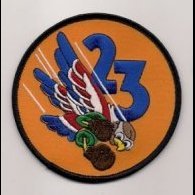
Hasegawa 1:48 F4 J "Showtime 100"
Mark V replied to MarkTurner's topic in Ready for Inspection - Aircraft
Very nice! Really came out great. Well done getting the canopies closed and lined up. Or did you use the single piece canopy that Hasegawa supplied in some of their kits? Either way, respect for your skills overall. -
Thank you for the likes and comments. I’m still waiting on the C-130 windscreen so I’m working on 2 Bf-109 builds. Both 1/48 - Hasegawa F-Trop (Marseille) and the older Revell G-10.
-
While waiting for a replacement windscreen from Zvezda for my 1/72nd C-130, I built the Tamiya 1/48th P-47D Razorback. I've had this kit in the stash for many years but something else always pulled me away from building it. Since I am not sure how long it will take for Zvezda to get the part to me to continue the C-130 build, I wanted something that would be "quick". This one was fairly quick, for me, but painting took quite a while, even with the relatively simple color scheme. I painted on the stripes and tried a new metal finish (for me). I also had an Eduard color PE set for this one. Overall, I am happy with the result. Of course there are some things I think I could do better with. I used an aftermarket seat with molded on belts, Quickboost I think. Paint is the Vallejo Metal Color Aluminum with a few panels in a mix of Aluminum and "Silver". The paint set had 4 colors included, but the other 3 were quite a bit darker than the aluminum. The darker panels are a 60/40 mix of aluminum and silver. The white stripes are the undercoat of Tamiya spray can Fine White Primer. The black stripes are Testors flat back, and the forward antiglare panel is Model Master Olive Drab. Decals are a mix of kit stencils, Eagle Strike, and Superscale. I painted the cockpit in my version of Dull Dark Green, an ancient tin of Humbrol 88 (pushing 25+ years old and still working well.) However last week, on Hyperscale, a discussion erupted concerning P-47 cockpit colors. I don't think there was any confirmation on colors for various P-47 models (C, D, G, M, N). Interesting food for thought... Background on this one: While researching the 23rd Fighter Squadron, 36th Fighter Group, in WW2, I always thought that they started D-Day carrying bombs for close air support or battlefield interdiction. Most, if not all, USAAF fighter wings were tasked with air superiority for the first missions of the day. The 36th was no exception. In reading pilot accounts, most flew 3 or even 4 sorties on June 6, 1944. The first 2 sorties were air superiority, and following tasking was for air to ground. I wanted to show this aircraft ready for it's first mission that morning. I choose tail number 42-26043, a P-47D-22-RE. This ship was lost to flak near Mortain, France on 7 Aug 44. Pilot James "Mose" Cole was KIA. I wasn't sure of the in-squadron letter so I chose "J" because I had a J on the decal sheets and my wife's name starts with "J". It wasn't until after the 36th moved to the continent that colorful engine cowling and tailplanes appeared. Even though it's just silver, black, and white, mostly, it still has some color pops here and there. I kept weathering to a minimum since the aircraft were fairly new, having only been in operation for a few weeks before the invasion, and the stripes had been painted only hours before the first sorties on D-Day.
-
I am starting a build of the 1/48 Hasegawa Bf-109F. I have the Marseille kit and plan on building W.Nr 8693, the “red” rudder one. I found a photo showing this aircraft did have the external strips. Hours of web searching, including reading many threads here on Britmodeller, resulted in some confusion for me. Not surprising I guess since the threads on various forums go back to the early 2000s. Updated info I guess. My basic question is: On the 109F, on what sub-types (F2, F4, etc) were the external tail plates installed? I thought I read that they were on the F2 but not on the F4. But color profiles of 8693 state it’s an F4. Is there a rule of thumb for this? The Hasegawa kit does not have the plates, but easy to add if I feel like it. Does anyone know the dimensions of the plates?


